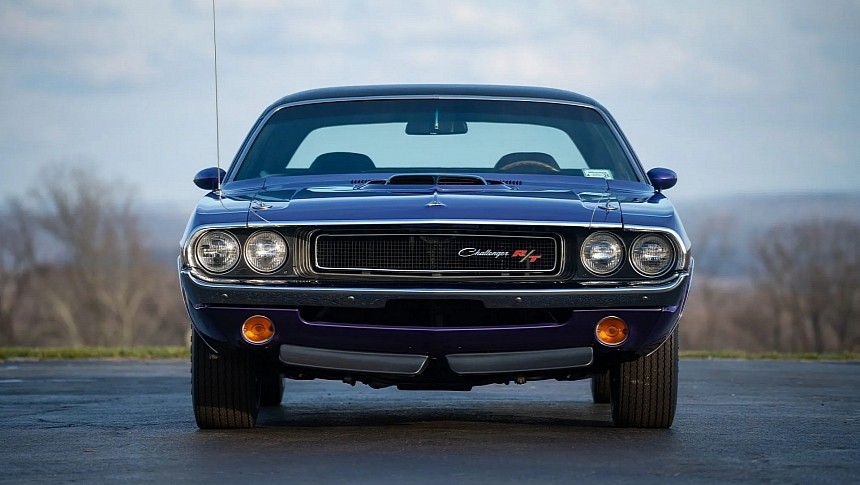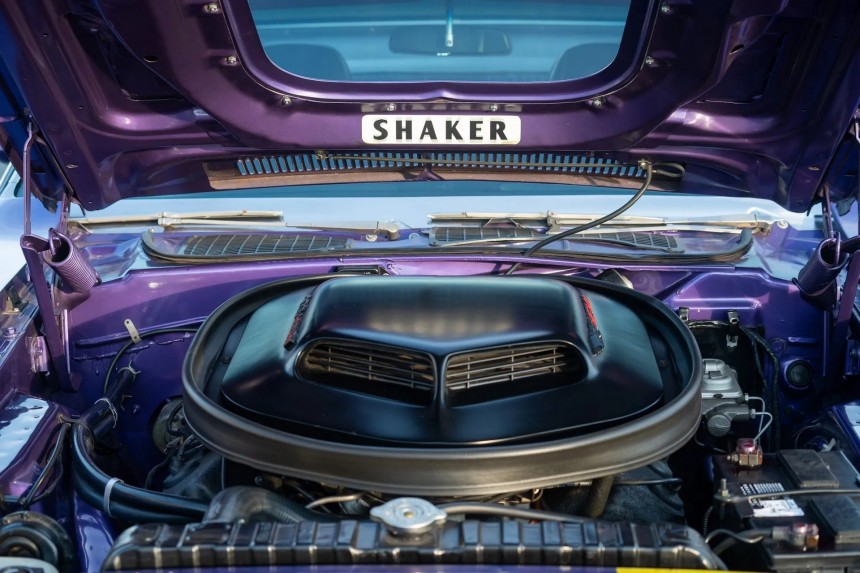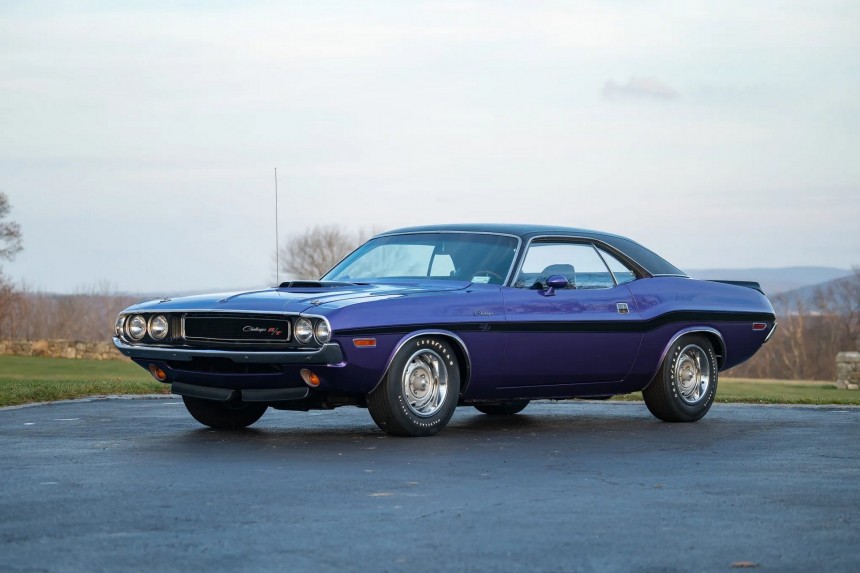Dodge played an eight-shooter Russian roulette in 1970 when it put out the brand-new Challenger in the muscle car arena. The decision seemed to make little sense – the Chrysler division already had a player in that game, the fabulous Charger, released just five years prior. However, Mother Mopar was right, and the Challenger became an icon, especially when wearing the alphanumerical code of majesty ‘426 HEMI.’
Revealed in the fall of 1969 for the 1970 model year, the Challenger was one of the two Chrysler's E-sized creations – the other being the reinterpreted Barracuda. Unlike the Plymouth moniker, which was already seven years old, the Challenger faired great in sales at its debut, drawing the sales line after almost 77,000 examples.
Over 18,000 of the total came with the two famous scarlet letters of performance – R/T, as in Road/Track – and a neat trick up its big-block sleeve. Since the Charger already offered pretty much everything a hot-headed piston addict could possibly want, the Challenger was given an extra engine option for the go-fast package. The 383 cubic-inch V8 (6.3-liter) was the entry-level in the R/T territory for the E-body Dodge of 1970.
The rest of the arsenal was identical to the mid-sized veteran: two 440 Magnums (the regular four-barrel and the newly-introduced Six-Pack) and, of course, the 426 HEMI legend. As expected, the smallest engine got the lion’s share of that year’s sales of the Challenger R/T package. Some two-thirds of the 18,512 performance examples wore the 383 motor.
At the opposite spectrum lay – as usual – the finicky hemispherical-heads 426-incher earthquake machine, the 7.0-liter mastodont with its 425 horsepower and 490 lb-ft of crank-snapping torque. Most of the 356 HEMI Challengers of the inaugural year came in the basic hardtop form, while 60 wore the Special Edition garment, and only nine wore a ragtop.
Of the 287 rarities, 150 were entrusted with the three-speed automatic transmission, and the remaining 137 had three pedals, four forward gears, and unlimited smiles per gallon. Naturally, these don’t go unnoticed today, particularly when wearing a high-visibility livery like Plum Crazy. Take the following example as a reference (or take it home if you have a thick brick of legal tender portraits of former U.S. presidents).
One of the four-speed-equipped Challengers of the first-issue year, the car has amassed over 69,000 miles (111,021 kilometers). Would it be politically incorrect to pull stereotypes and assume its past as a quarter-mile regular client? Its history is unknown, but its originality is– backed by documentation. The engine, transmission, and rear match numbers, but the purple madness was addressed 30 years ago when a former owner repainted this Dodge.
There’s a pistol grip shifter and a long list of factory-installed options, but the shaker hood scoop isn’t one of them. The iconic air-grabbing blowhole was installed after the car was purchased (it is a new old stock part to keep the vehicle correct from the rubber to the vinyl top).
A perceptive observer will immediately notice something eerily out of place at the rear end – the T/A spoiler on the trunk lid. Although the T/A was also released in 1970 (and it hasn’t been slated for a sequel since), the ducktail-style aerodynamic detail is not something R/Ts came with from the factory.
Whatever the rationale behind this installment, this HEMI-powered survivor didn’t need any gimmick to make itself heard. After all, with 431 PS and 664 Nm to play, this more-speed (the ‘m’ is intentional) is fully entitled to the current bid of $150,000, with four days left of the auction.
Over 18,000 of the total came with the two famous scarlet letters of performance – R/T, as in Road/Track – and a neat trick up its big-block sleeve. Since the Charger already offered pretty much everything a hot-headed piston addict could possibly want, the Challenger was given an extra engine option for the go-fast package. The 383 cubic-inch V8 (6.3-liter) was the entry-level in the R/T territory for the E-body Dodge of 1970.
The rest of the arsenal was identical to the mid-sized veteran: two 440 Magnums (the regular four-barrel and the newly-introduced Six-Pack) and, of course, the 426 HEMI legend. As expected, the smallest engine got the lion’s share of that year’s sales of the Challenger R/T package. Some two-thirds of the 18,512 performance examples wore the 383 motor.
Of the 287 rarities, 150 were entrusted with the three-speed automatic transmission, and the remaining 137 had three pedals, four forward gears, and unlimited smiles per gallon. Naturally, these don’t go unnoticed today, particularly when wearing a high-visibility livery like Plum Crazy. Take the following example as a reference (or take it home if you have a thick brick of legal tender portraits of former U.S. presidents).
One of the four-speed-equipped Challengers of the first-issue year, the car has amassed over 69,000 miles (111,021 kilometers). Would it be politically incorrect to pull stereotypes and assume its past as a quarter-mile regular client? Its history is unknown, but its originality is– backed by documentation. The engine, transmission, and rear match numbers, but the purple madness was addressed 30 years ago when a former owner repainted this Dodge.
A perceptive observer will immediately notice something eerily out of place at the rear end – the T/A spoiler on the trunk lid. Although the T/A was also released in 1970 (and it hasn’t been slated for a sequel since), the ducktail-style aerodynamic detail is not something R/Ts came with from the factory.
Whatever the rationale behind this installment, this HEMI-powered survivor didn’t need any gimmick to make itself heard. After all, with 431 PS and 664 Nm to play, this more-speed (the ‘m’ is intentional) is fully entitled to the current bid of $150,000, with four days left of the auction.




























